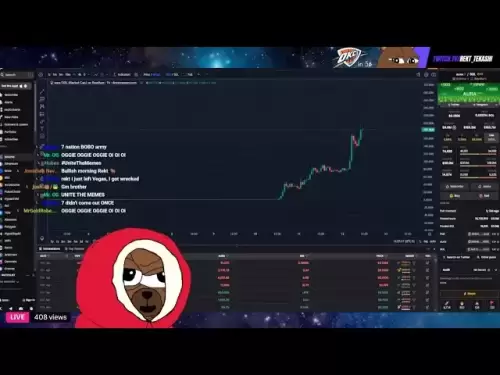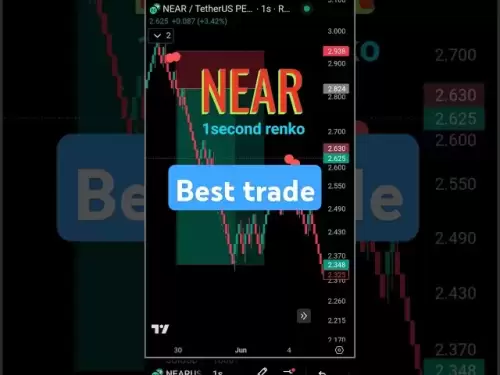-
 Bitcoin
Bitcoin $105,288.6945
-2.61% -
 Ethereum
Ethereum $2,546.9059
-7.84% -
 Tether USDt
Tether USDt $1.0004
0.05% -
 XRP
XRP $2.1438
-4.68% -
 BNB
BNB $653.2251
-1.80% -
 Solana
Solana $146.3449
-8.07% -
 USDC
USDC $0.9997
0.01% -
 Dogecoin
Dogecoin $0.1778
-5.94% -
 TRON
TRON $0.2688
-2.27% -
 Cardano
Cardano $0.6373
-7.04% -
 Hyperliquid
Hyperliquid $41.2776
-4.37% -
 Sui
Sui $3.0223
-9.71% -
 Chainlink
Chainlink $13.3280
-7.77% -
 Bitcoin Cash
Bitcoin Cash $430.6921
-2.12% -
 UNUS SED LEO
UNUS SED LEO $9.0426
1.98% -
 Avalanche
Avalanche $19.2275
-8.92% -
 Stellar
Stellar $0.2600
-5.55% -
 Toncoin
Toncoin $2.9984
-6.13% -
 Shiba Inu
Shiba Inu $0.0...01195
-5.71% -
 Hedera
Hedera $0.1566
-7.37% -
 Litecoin
Litecoin $84.6896
-5.28% -
 Polkadot
Polkadot $3.8188
-6.28% -
 Ethena USDe
Ethena USDe $1.0004
0.00% -
 Monero
Monero $311.9801
-3.66% -
 Dai
Dai $0.9998
0.00% -
 Bitget Token
Bitget Token $4.5149
-4.09% -
 Uniswap
Uniswap $7.4602
-6.13% -
 Pepe
Pepe $0.0...01088
-11.16% -
 Aave
Aave $280.9076
-8.02% -
 Pi
Pi $0.5699
-8.88%
How to use the Bollinger Band bandwidth contraction to predict the timing of volatility outbreak?
Traders use Bollinger Band bandwidth contraction to predict volatility outbreaks in crypto markets, watching for the bands to narrow before significant price movements.
Jun 12, 2025 at 04:36 am
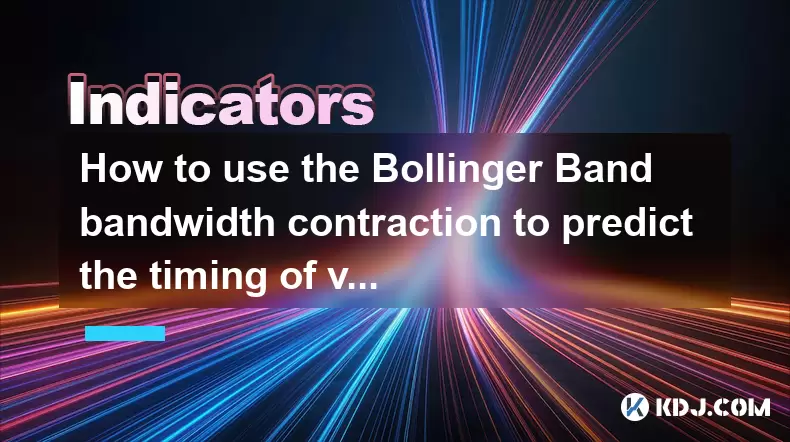
The Bollinger Band is a popular technical analysis tool used by traders in the cryptocurrency market to gauge volatility and potential price movements. One specific strategy that traders often employ is using the Bollinger Band bandwidth contraction to predict the timing of a volatility outbreak. This article will delve into the intricacies of this method, providing a comprehensive guide on how to effectively utilize this technique.
Understanding Bollinger Bands
Before diving into the specifics of bandwidth contraction, it's crucial to understand what Bollinger Bands are. Bollinger Bands consist of three lines: the middle band, which is typically a simple moving average (SMA), and two outer bands that are standard deviations away from the middle band. The standard settings for Bollinger Bands are a 20-day SMA for the middle band and two standard deviations for the outer bands.
The purpose of Bollinger Bands is to provide a relative definition of high and low prices and to identify periods of high and low volatility. When the bands are close together, it indicates low volatility, and when they are far apart, it suggests high volatility.
What is Bollinger Band Bandwidth Contraction?
Bollinger Band bandwidth contraction refers to the narrowing of the space between the upper and lower Bollinger Bands. This phenomenon is often interpreted as a period of low volatility. Traders pay close attention to these contractions because they can precede significant price movements, or what is commonly referred to as a volatility outbreak.
The bandwidth of the Bollinger Bands can be calculated using the following formula:
[ \text{Bandwidth} = \frac{\text{Upper Band} - \text{Lower Band}}{\text{Middle Band}} ]
When the bandwidth value decreases, it indicates that the bands are contracting. This contraction is what traders look for to predict potential volatility outbreaks.
Identifying Bandwidth Contraction on Charts
To identify a bandwidth contraction on a cryptocurrency chart, traders need to follow these steps:
- Open your trading platform: Ensure you have access to a reliable trading platform that supports technical analysis tools.
- Add Bollinger Bands to the chart: Locate the indicators section in your trading platform and add Bollinger Bands to your chart. Make sure the settings are set to the standard 20-day SMA and two standard deviations.
- Observe the bands: Pay close attention to the space between the upper and lower bands. A contraction occurs when this space narrows over time.
- Monitor the bandwidth indicator: Some trading platforms offer a separate bandwidth indicator that plots the bandwidth value on a separate chart. This can help visualize the contraction more clearly.
Using Bandwidth Contraction to Predict Volatility Outbreaks
Once you have identified a bandwidth contraction, the next step is to use this information to predict a volatility outbreak. Here's how you can do it:
- Wait for confirmation: A bandwidth contraction alone is not enough to predict a volatility outbreak. Traders often wait for additional confirmation signals, such as a breakout from a consolidation pattern or a significant candlestick pattern.
- Set up alerts: Many trading platforms allow you to set up alerts for when the Bollinger Bands start to expand after a period of contraction. This can help you stay vigilant for potential price movements.
- Analyze the direction of the breakout: When the bands start to expand, it's essential to analyze the direction of the breakout. A breakout to the upside suggests a bullish move, while a breakout to the downside indicates a bearish move.
- Manage risk: Always set stop-loss orders to manage your risk. Volatility outbreaks can be unpredictable, and it's crucial to protect your capital.
Practical Example of Bandwidth Contraction in Action
To illustrate how bandwidth contraction can be used to predict a volatility outbreak, let's consider a hypothetical example with Bitcoin (BTC).
- Scenario: You notice that the Bollinger Bands on the BTC/USD chart have been contracting over the past few weeks, indicating low volatility.
- Action: You decide to wait for a confirmation signal. After a few days, you observe a bullish engulfing candlestick pattern forming near the lower Bollinger Band.
- Confirmation: The bands start to expand, and the price breaks above the upper Bollinger Band, confirming a bullish breakout.
- Trade execution: You enter a long position on BTC/USD, setting a stop-loss order just below the lower Bollinger Band to manage risk.
- Outcome: The price of BTC/USD continues to rise, resulting in a profitable trade.
Combining Bandwidth Contraction with Other Indicators
While bandwidth contraction can be a powerful tool on its own, combining it with other technical indicators can enhance its effectiveness. Here are some popular indicators that traders often use in conjunction with Bollinger Bands:
- Relative Strength Index (RSI): The RSI can help confirm overbought or oversold conditions, which can be useful during a volatility outbreak.
- Moving Average Convergence Divergence (MACD): The MACD can provide additional confirmation of trend direction and momentum.
- Volume: High volume during a breakout can validate the strength of the move.
By integrating these indicators with bandwidth contraction, traders can gain a more comprehensive view of the market and make more informed trading decisions.
Frequently Asked Questions
Q1: Can bandwidth contraction be used for all cryptocurrencies?
A1: Yes, bandwidth contraction can be applied to any cryptocurrency that has sufficient trading volume and price data. However, the effectiveness may vary depending on the liquidity and volatility of the specific cryptocurrency.
Q2: How long should I wait for a volatility outbreak after observing a bandwidth contraction?
A2: There is no definitive answer to this question, as the timing of a volatility outbreak can vary. Some traders may wait a few days, while others may wait weeks. It's essential to monitor the market closely and look for additional confirmation signals.
Q3: Can bandwidth contraction be used in conjunction with fundamental analysis?
A3: While bandwidth contraction is a technical analysis tool, it can be used alongside fundamental analysis. For instance, if a significant news event is expected, traders might look for a bandwidth contraction as a precursor to a potential volatility outbreak triggered by the news.
Q4: Is bandwidth contraction more effective in certain market conditions?
A4: Bandwidth contraction tends to be more effective in ranging or consolidating markets, where periods of low volatility are followed by significant price movements. In highly volatile markets, the bands may not contract as much, making it more challenging to predict outbreaks.
Disclaimer:info@kdj.com
The information provided is not trading advice. kdj.com does not assume any responsibility for any investments made based on the information provided in this article. Cryptocurrencies are highly volatile and it is highly recommended that you invest with caution after thorough research!
If you believe that the content used on this website infringes your copyright, please contact us immediately (info@kdj.com) and we will delete it promptly.
- Bitwise CEO Predicts Bitcoin Holders Will Stop Selling Once Price Surpasses $130,000
- 2025-06-14 01:30:12
- Neo Pepe’s Revolution Begins
- 2025-06-14 01:30:12
- Aptos (APT) Token Unlock – June 12, 2025
- 2025-06-14 01:25:12
- Aptos (APT) Token Unlock – June 12, 2025
- 2025-06-14 01:25:12
- Ruvi AI Emerges as a Potential Rival to Cardano (ADA)
- 2025-06-14 01:20:12
- Market Capitalization Often Confuses Casual Investors, and Detractors Have Weaponized It Against Bullish XRP Price Predictions
- 2025-06-14 01:20:12
Related knowledge
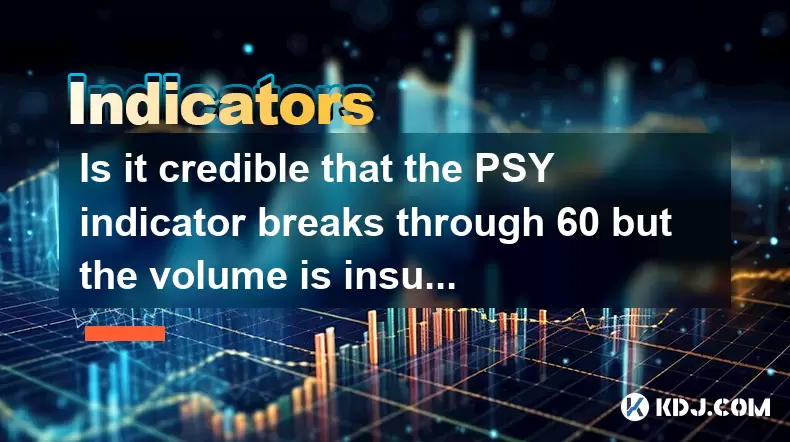
Is it credible that the PSY indicator breaks through 60 but the volume is insufficient?
Jun 14,2025 at 12:14am
Understanding the PSY Indicator in Cryptocurrency TradingThe Psychological Line (PSY) indicator is a momentum oscillator used primarily to measure the sentiment of traders and investors in financial markets, including the cryptocurrency space. It calculates the ratio of days where prices closed higher versus lower over a specified period, typically 12 o...
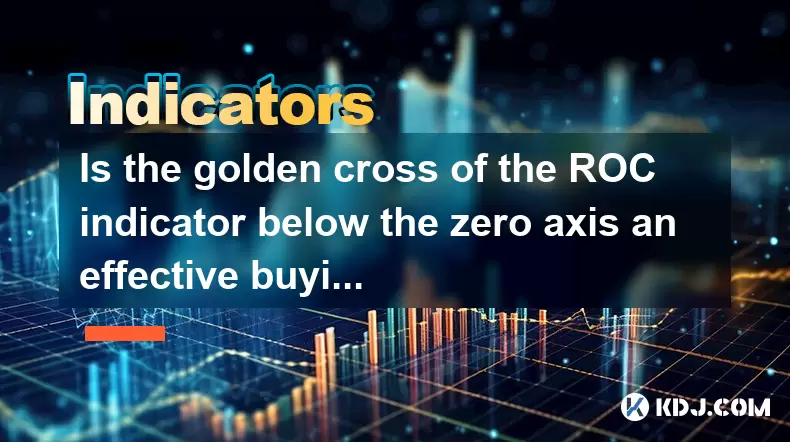
Is the golden cross of the ROC indicator below the zero axis an effective buying point?
Jun 14,2025 at 01:29am
Understanding the ROC Indicator and Its SignificanceThe Rate of Change (ROC) indicator is a momentum oscillator used in technical analysis to measure the percentage change in price between the current closing price and the closing price from a set number of periods ago. This tool helps traders assess the speed at which prices are changing, offering insi...

Will the RSI fall after the top divergence? How to improve the judgment accuracy?
Jun 13,2025 at 11:21pm
Understanding RSI and Top Divergence in Cryptocurrency TradingThe Relative Strength Index (RSI) is a momentum oscillator widely used in cryptocurrency trading to measure the speed and change of price movements. It typically ranges from 0 to 100, with levels above 70 considered overbought and below 30 considered oversold. In crypto markets, where volatil...
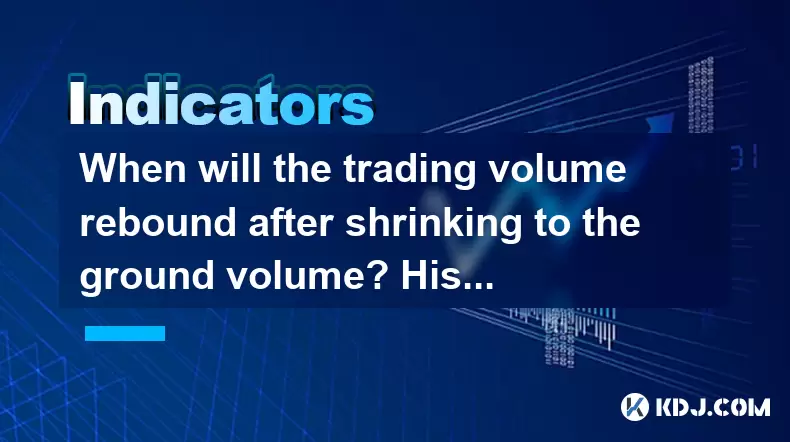
When will the trading volume rebound after shrinking to the ground volume? Historical percentile comparison method
Jun 13,2025 at 03:36pm
Understanding the Ground Volume Concept in Cryptocurrency MarketsIn cryptocurrency trading, 'ground volume' refers to a period when the trading volume of a particular asset or market drops significantly, often reaching multi-month or even multi-year lows. This phenomenon typically signals a lack of interest from traders and investors, suggesting that th...
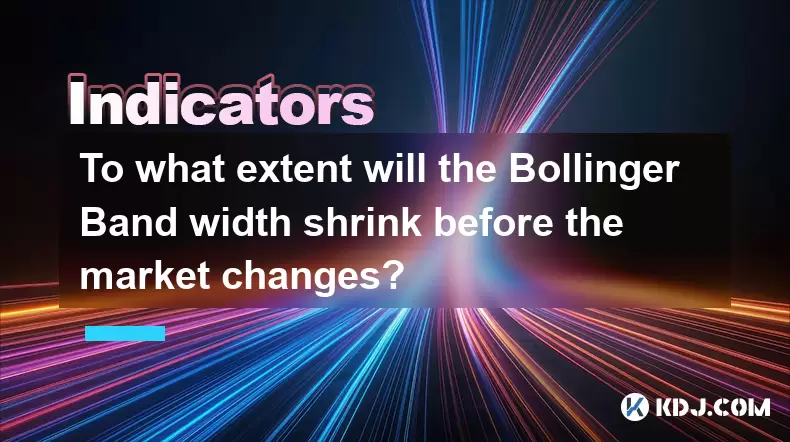
To what extent will the Bollinger Band width shrink before the market changes?
Jun 13,2025 at 06:35pm
Understanding the Bollinger Band Width and Its SignificanceThe Bollinger Band width is a critical technical analysis tool used in cryptocurrency trading to measure market volatility. It consists of three lines: a simple moving average (SMA), an upper band, and a lower band. The distance between the upper and lower bands reflects the level of volatility ...
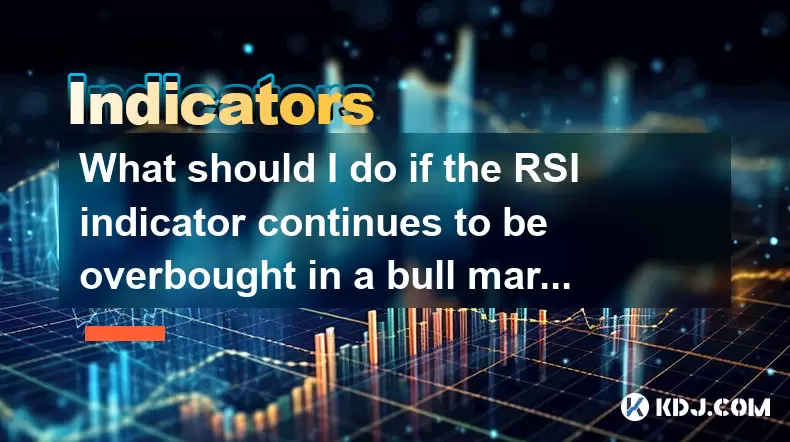
What should I do if the RSI indicator continues to be overbought in a bull market? How to adjust the overbought zone threshold?
Jun 13,2025 at 05:57pm
Understanding the RSI Indicator in a Bull MarketThe Relative Strength Index (RSI) is a momentum oscillator commonly used by traders to assess overbought or oversold conditions of an asset. In a bull market, especially within the cryptocurrency space, prices can remain elevated for extended periods. This often leads to the RSI indicator staying in the ov...

Is it credible that the PSY indicator breaks through 60 but the volume is insufficient?
Jun 14,2025 at 12:14am
Understanding the PSY Indicator in Cryptocurrency TradingThe Psychological Line (PSY) indicator is a momentum oscillator used primarily to measure the sentiment of traders and investors in financial markets, including the cryptocurrency space. It calculates the ratio of days where prices closed higher versus lower over a specified period, typically 12 o...

Is the golden cross of the ROC indicator below the zero axis an effective buying point?
Jun 14,2025 at 01:29am
Understanding the ROC Indicator and Its SignificanceThe Rate of Change (ROC) indicator is a momentum oscillator used in technical analysis to measure the percentage change in price between the current closing price and the closing price from a set number of periods ago. This tool helps traders assess the speed at which prices are changing, offering insi...

Will the RSI fall after the top divergence? How to improve the judgment accuracy?
Jun 13,2025 at 11:21pm
Understanding RSI and Top Divergence in Cryptocurrency TradingThe Relative Strength Index (RSI) is a momentum oscillator widely used in cryptocurrency trading to measure the speed and change of price movements. It typically ranges from 0 to 100, with levels above 70 considered overbought and below 30 considered oversold. In crypto markets, where volatil...

When will the trading volume rebound after shrinking to the ground volume? Historical percentile comparison method
Jun 13,2025 at 03:36pm
Understanding the Ground Volume Concept in Cryptocurrency MarketsIn cryptocurrency trading, 'ground volume' refers to a period when the trading volume of a particular asset or market drops significantly, often reaching multi-month or even multi-year lows. This phenomenon typically signals a lack of interest from traders and investors, suggesting that th...

To what extent will the Bollinger Band width shrink before the market changes?
Jun 13,2025 at 06:35pm
Understanding the Bollinger Band Width and Its SignificanceThe Bollinger Band width is a critical technical analysis tool used in cryptocurrency trading to measure market volatility. It consists of three lines: a simple moving average (SMA), an upper band, and a lower band. The distance between the upper and lower bands reflects the level of volatility ...

What should I do if the RSI indicator continues to be overbought in a bull market? How to adjust the overbought zone threshold?
Jun 13,2025 at 05:57pm
Understanding the RSI Indicator in a Bull MarketThe Relative Strength Index (RSI) is a momentum oscillator commonly used by traders to assess overbought or oversold conditions of an asset. In a bull market, especially within the cryptocurrency space, prices can remain elevated for extended periods. This often leads to the RSI indicator staying in the ov...
See all articles





















